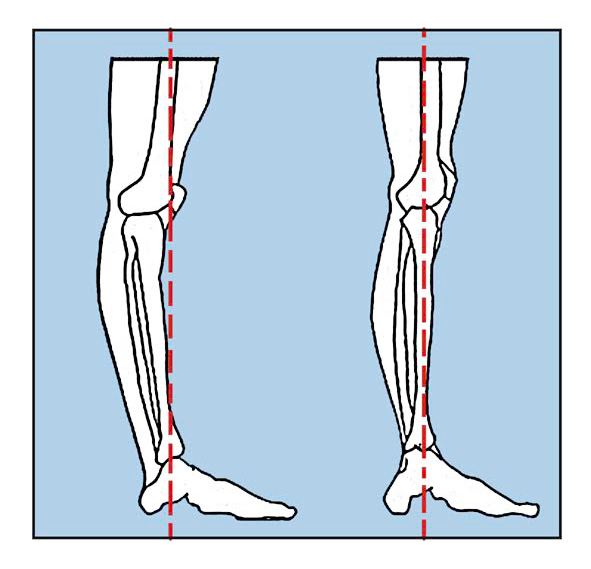Hyperextension is the movement of a joint past its normal range. All our joints have an optimal range of movement, which they are designed to function optimally within. They are also designed to be able to a little bit beyond that range as a mechanism to protect from injury.
If the knee joint is hyperextended the shin bones are pulled backwards in relation to the foot.

The bones of the body are meant to stack one of top of the other in order to transfer ‘forces’ through the joints and the body. If the knee joint is hyperextended, it puts greater strain on the ligaments at the back of the knee and has the impact of unbalancing the muscles above and below the joint. Ultimately the whole body is affected as our lower body doesn’t work in isolation of the upper body.
If our daily habits assist in the hyperextension of the knee, the joint will gradually become lax. This laxity can then transpose into our movement when standing and walking. So, when walking our leg straightens as our heel strikes the ground and transfer forces up the leg the bones of the leg should stay in parallel. If there is laxity at the joint at this point the knee effectively moves backwards, closes the space of the knee joint and increases the likelihood of wear and tear of the joint.
Signs you might be a ‘knee extender’?
- Loss of definition of the vertical creases at the back of your knees.
- Your legs look like they’re bending backwards.
If you recognise that you’re a ‘knee extender’ what can you do to break the habit?
- Keep checking your knee position when standing. They should be soft and feel relaxed but not bent.
- Take shorter steps when walking. This will also help you move from your core as opposed to your extremities.

Recent Comments